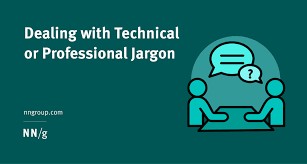
Technology has a language of its own, and while that language is essential for precision and innovation, it can often create barriers between experts and the people they aim to serve. From acronyms like API and SaaS to terms like latency, containerization, and machine learning, tech jargon can quickly alienate audiences who are not steeped in the field. The challenge, then, is not just to build great technology but to explain it in ways that are accessible, relatable, and useful. Translating tech jargon into plain language is more than a communication skill—it’s a strategic advantage that fosters trust, drives adoption, and bridges the gap between innovation and impact.
The disconnect often begins with assumptions. Technologists, immersed in their domain, may assume that certain terms are universally understood. But what’s second nature to a developer might be completely foreign to a business stakeholder, customer, or end user. When a product team describes a feature as “leveraging edge computing to reduce latency,” they may be technically accurate, but the message might not land. A clearer explanation—such as “we’ve designed the system to respond faster by processing data closer to where it’s used”—can convey the same idea in a way that resonates. The goal is not to dumb down the message but to make it meaningful to the audience.
Context plays a crucial role in this translation. Plain language explanations are most effective when they connect technical concepts to real-world outcomes. Instead of describing a CRM system as “a centralized database with integrated analytics and workflow automation,” it’s more helpful to say, “this tool helps your team keep track of customer interactions, spot trends, and follow up more efficiently.” By focusing on what the technology does rather than how it works, communicators can highlight value and relevance. This approach is especially important in sales, marketing, and customer support, where clarity can make or break engagement.
Analogies and storytelling are powerful tools for bridging the gap. Comparing a firewall to a security guard or describing cloud storage as a digital filing cabinet can help non-technical audiences grasp complex ideas. These metaphors create mental models that are easier to understand and remember. Storytelling adds another layer, allowing communicators to illustrate how a technology solves a problem or improves a process. For example, explaining how a logistics company used predictive analytics to reduce delivery delays paints a vivid picture of impact. These techniques humanize technology and make it more approachable.
The shift toward plain language also reflects a broader cultural change in tech. As products become more user-centric, communication must follow suit. It’s no longer enough for engineers to build elegant systems—they must also collaborate with designers, writers, and product managers to ensure that users understand and benefit from those systems. This interdisciplinary approach encourages empathy and clarity, aligning technical excellence with user experience. It also supports inclusivity, making technology accessible to people with diverse backgrounds, abilities, and levels of expertise.
Internal communication within organizations benefits just as much from plain language. Cross-functional teams often struggle with misalignment due to jargon-heavy exchanges. When IT teams talk about “refactoring legacy code to improve modularity,” business leaders may not grasp the implications. Reframing the message as “we’re updating the system to make it easier to maintain and expand” fosters understanding and collaboration. Clear communication helps teams make informed decisions, allocate resources effectively, and stay aligned on goals. It reduces friction and builds a shared sense of purpose.
Plain language also plays a critical role in documentation and training. Whether it’s onboarding new employees, supporting customers, or guiding users through a product, clarity is key. Technical manuals filled with jargon can frustrate and confuse, while well-written guides that use everyday language empower users to learn and succeed. This is particularly important in industries like healthcare, finance, and education, where technology intersects with high-stakes decisions. When people understand how to use a system, they’re more likely to trust it, rely on it, and advocate for it.
The rise of AI and automation adds another layer to the conversation. As machines take on more tasks, the need to explain their behavior and decisions becomes critical. Users want to know why an algorithm made a recommendation or how a chatbot understands their request. Transparent, plain-language explanations help demystify these systems and build confidence. They also support ethical design, ensuring that users are informed and empowered rather than confused or misled. In this context, communication is not just a courtesy—it’s a responsibility.
Ultimately, the move from tech jargon to plain language is about connection. It’s about recognizing that technology serves people, and that people deserve to understand what they’re using. It’s about fostering dialogue, reducing intimidation, and making innovation inclusive. For businesses, it’s a way to differentiate, build loyalty, and drive adoption. For technologists, it’s a way to share their work more broadly and make a greater impact. And for everyone involved, it’s a reminder that clarity is not the enemy of complexity—it’s the bridge that makes complexity useful.